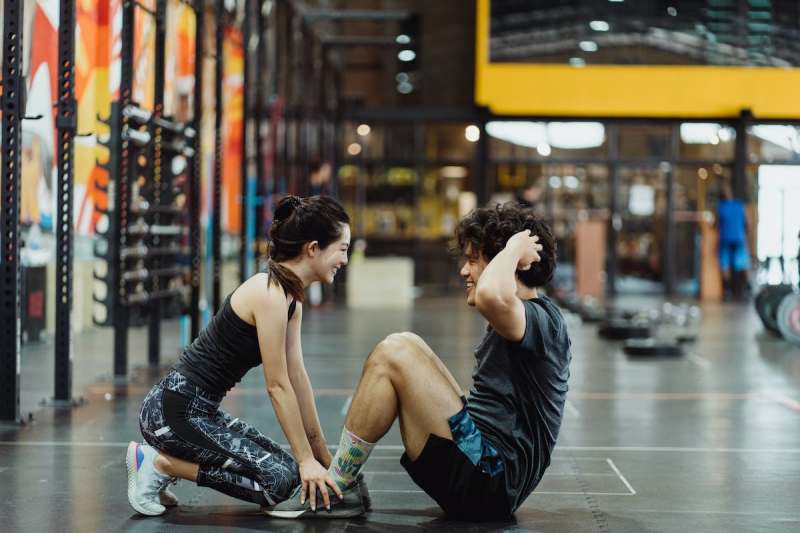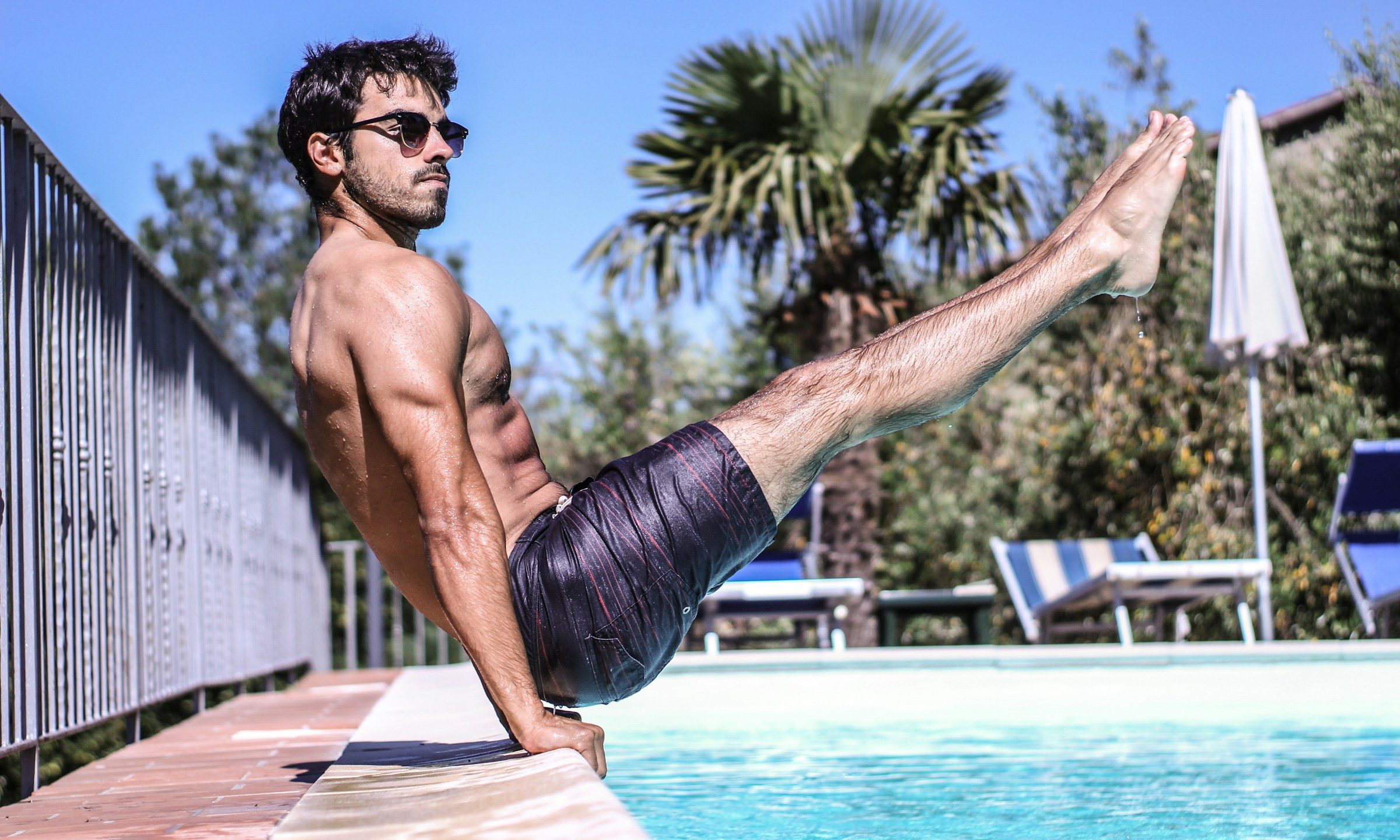
Sit-ups probably come to mind when considering exercises to target your abs. Some seek the sculpted washboard look, while others want to strengthen these important core muscles. Seated exercises are an excellent choice to mix up your workouts and for those with mobility limitations to continue to get the benefits of exercise. It turns out that some of these seated ab exercises are better than sit-ups and can help strengthen your deeper core muscles and improve balance and coordination. We’ve found the top four seated ab exercises to target your core and sculpt those abs.

1. Seated L-sits
L-sits involve isometric contraction, where you generate force and static muscle contraction without moving the affected joint or noticeably changing the length of the muscle or muscle group. L-sits work your abs, hip flexors, glutes, quads, triceps, and shoulders. You can perform L-sits on two parallel bars, blocks, or on the floor. You can also use two kettlebells on the floor.
To perform an L-sit:
- From a seated position, grip the kettlebells or bars or place your hands flat on the blocks or floor next to your hips.
- Straighten your arms and push through your hands while lifting both legs off the ground.
- Engage your core and hold the position. (The goal is to make an L-shape with your body.)
- If you can’t quite make the L-shape, try tucking your knees in toward your chest as much as you can.
- Return to the starting position and repeat for your desired number of sets.

2. Seated twist
The seated twist or seated oblique twists are another superior choice for sculpting the abs. The seated oblique twists target your oblique muscles that run along each side of your abdominal area. They also work out your neck, shoulders, hips, and core. This exercise helps develop rotational strength, which is especially beneficial for sports like tennis and baseball. You can perform this exercise with or without dumbbells or a medicine ball on a chair, bench, or floor (yoga pose Ardha Matsyendrasana). Try to focus only on rotating your upper body, not your hips and legs.
How to perform a seated twist:
- Sit on a bench or chair with your feet on the floor.
- Try to keep your feet and your knees about hip-width apart.
- Lengthen your spine and keep your shoulders rolled back.
- Keep your core muscles engaged throughout this exercise.
- Twist your torso toward the right and place your right hand on the back of the chair.
- Place your left hand outside of your right thigh and try to deepen the twist.
- Turn your head to look over your right shoulder and hold the position.
- Return to the starting position and repeat on the other side.

3. Seated march
A seated march engages your hip flexors, core, and quads and improves hip flexibility and lower body strength. As the name suggests, a seated march is kind of like marching using your legs while seated in a chair. A seated march made our list because many people are able to perform this exercise, even if they can only do a few sit ups or none at all. It’s often recommended for those with physical limitations or recovering from an injury. The best part is that you can do seated marches discreetly, even if you’re sitting at your desk at work.
How to perform a seated march:
- Sit in a chair with your feet on the floor about hips-distance apart and your knees bent.
- You can grip the sides of your chair if you need more support.
- Brace your core and lift one knee up toward the ceiling as high as you can.
- Hold your leg in this position for a few moments, and try to keep your shoulders back.
- Drop your foot back down to the floor.
- Repeat with the other leg.

4. Seated V-tucks
V-tucks are a superior exercise for fine-tuning your balance and stability as well as shaping and strengthening your abdominal muscles. Challenge your core, hips, and legs with this movement. You can perform seated V-tucks on a chair, box, or exercise mat on the floor.
How to perform seated V-tucks:
- Sit down on an exercise mat or a bench with your arms extended out in front of you.
- Lean back, brace your core, and lift your feet off the floor.
- Straighten your legs and find your starting position and center of gravity.
- Contract your abs and bring or tuck your knees up toward your chest before extending your legs back out to the starting position.
- Repeat for your desired number of reps.
- To modify this exercise, if you’re finding it difficult to maintain balance, you can place your hands down by your hips on the mat or bench.

The downside of sit-ups
While sit-ups will always be a classic exercise that boosts your core strength, balance, and more, there is also a downside. For example, many people overdo it or don’t have the correct form, and they risk neck pain or injuries if they don’t properly support their spine. Too many sit-ups and repeated flexion can also put too much compressive force or pressure on the lower spine area, which could be an issue for some people or worsen a bulging or herniated disc. Plus, those recovering from an injury or with physical limitations might not be able to perform sit-ups. The good news is there are other exercises, including the seated exercises on our list, that are just as effective or even better at targeting the entire core, including the obliques.



